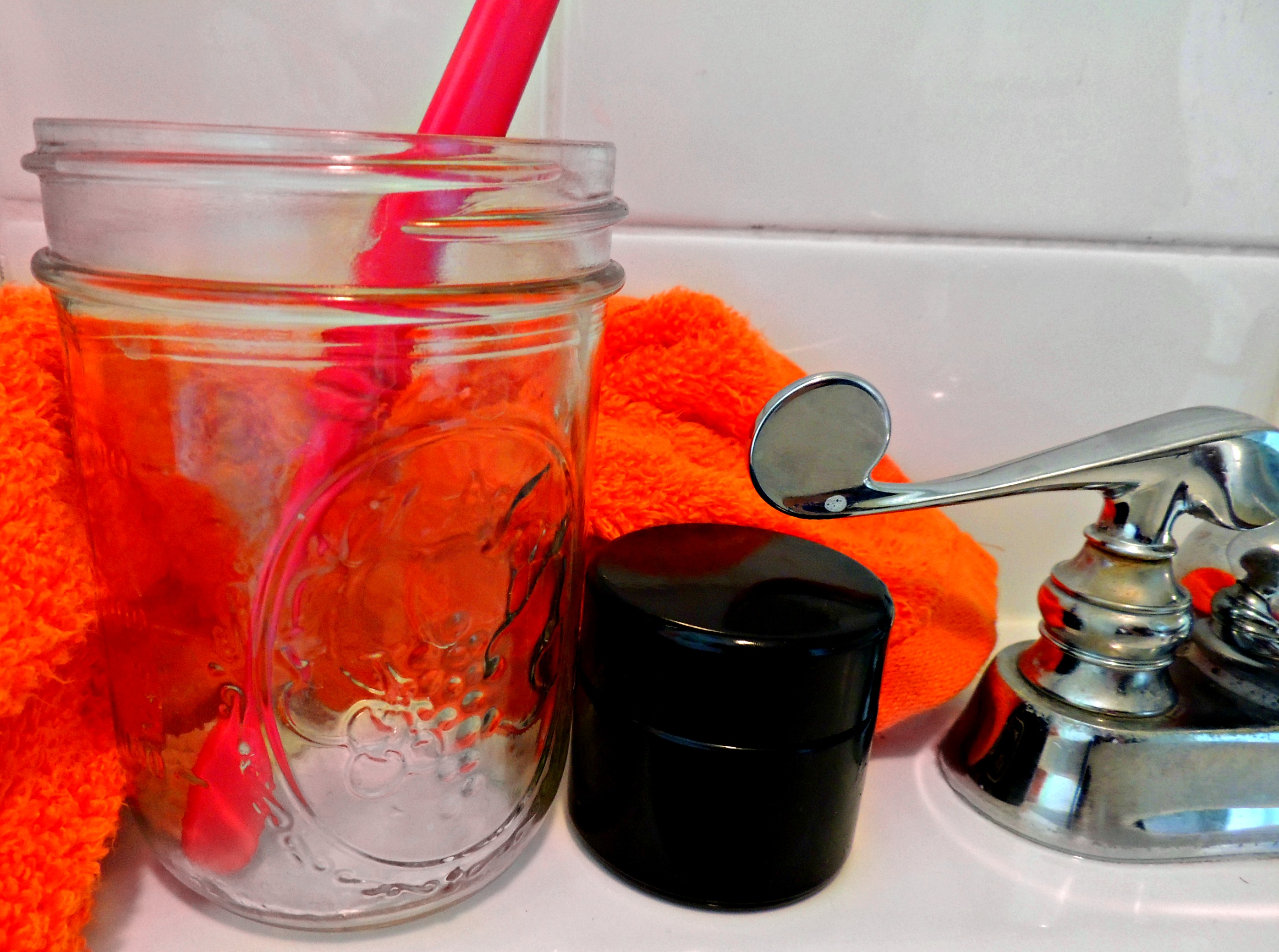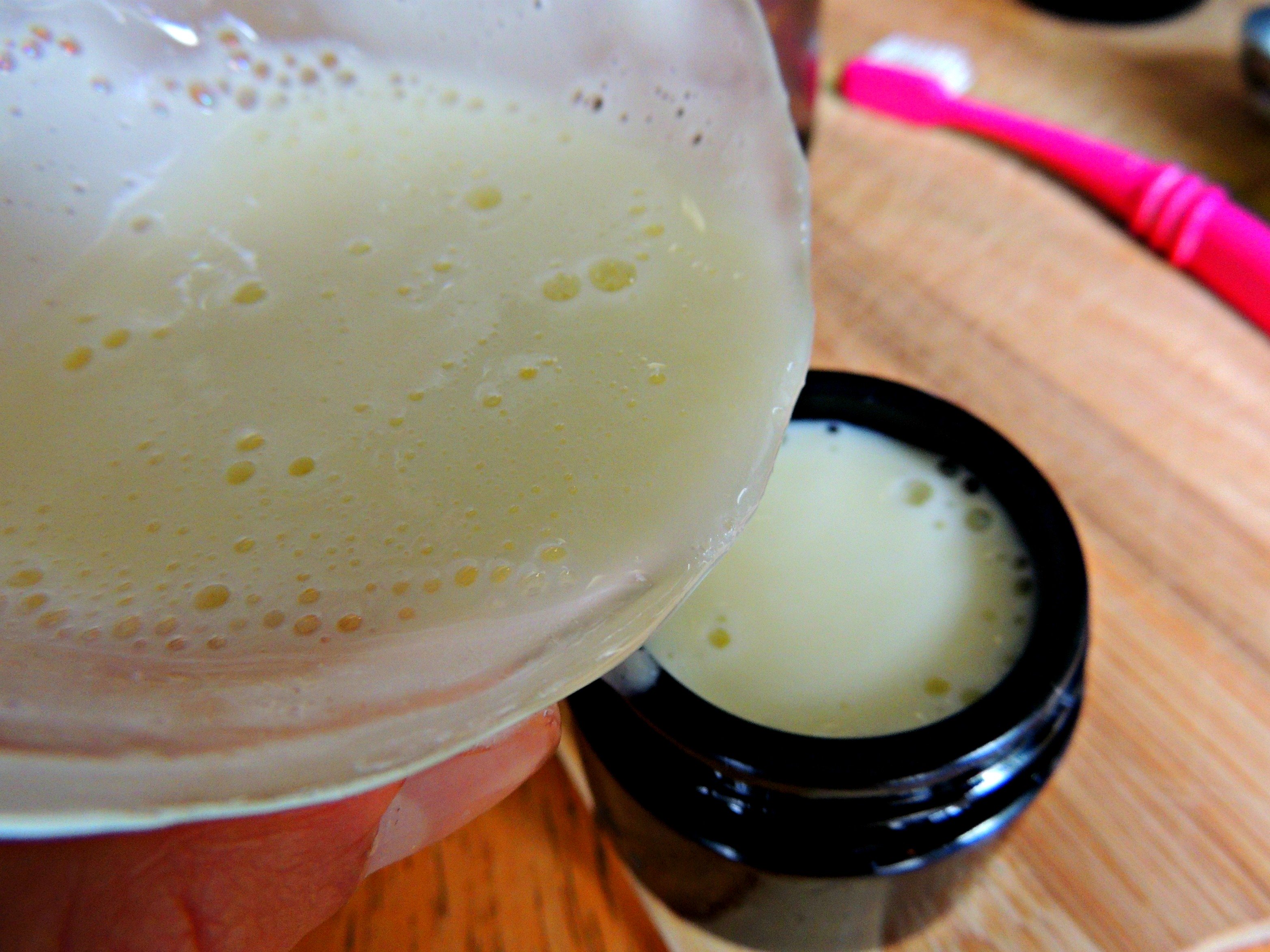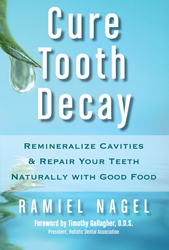94% of Americans claim that they dutifully lather up their pearly whites nightly. We are a nation captivated by mega-watt smiles, collectively spending over $2 billion a year on dental products including toothpaste, mouthwash and dental floss. Yet, despite these efforts towards dental hygiene, reports indicate that 75% of the population suffers from some form of periodontal gum disease. Tooth decay remains the most common chronic disease among children, affecting 59% of those aged 5-17 years. Something just doesn't add up...

The Tricky Tale of Toothpaste
It is hard to think about dentistry today without picturing a toothbrush with a large dollop of minty toothpaste squeezed onto it. The concept of toothpaste is believed to have originated more than 6,000 years ago in China, India and Egypt. Evidence has been found indicating that individuals in these ancient cultures would mash up unique combinations of twigs, herbs, salt, flower and even bones, to create a thick paste that was applied to teeth to freshen the mouth and allay gum disease. One toothpaste recipe from 4th Century AD Egypt has been preserved at the National Library in Vienna, Austria. In faded black ink on thin sheet of papyrus, it describes a mixture of salt, dried mint, grains of pepper and dried iris flower as the formula for "white and perfect teeth." As one might imagine, toothpastes nowadays are far different from these herbal salves, loaded with modern chemicals to "enhance" the experience. So what is it that you find in a typical toothpaste?
- Fluoride: Fluoride is an enzyme and hormone inhibitor, which affects the nervous system and digestion. Technically a drug, it is linked to tooth mottling, and has also been associated with brittle teeth and bones, kidney damage, neurological dysfunction and some cancers. India, Japan, China and most of Europe do not fluoridate their waters. Why do we? Learn more in The Case Against Fluoride, which received a "Thumbs Up" review in the Spring 2011 Wise Traditions Journal.
- Hydrated Silica: An abrasive agent made from quartz and sand, this substance has been found to cause extensive tooth wear with too much brushing.
- Artificial Sweeteners: Saccharin, sorbitol and xylitol are irritating chemical sweeteners which are commonly added to toothpaste to make them burst with thrilling flavors like “Cinnamon Rush,” “Wintergreen Ice” or “Citrus Expressions.” These chemicals have been shown to upset the GI system and have a neurotoxic effect in significant amounts. Read more about the dangers of artificial sweeteners.
- Sodium Lauryl Sulfate: A detergent, foaming agent and degreaser that is also found in large amounts in products for washing cars and floors. This chemical is easily absorbed by the body and has been shown to be associated with the development of canker sores.
- >Glycerin: A thick liquid that gives toothpaste its gel-like consistency, and also prevents it from drying out. Glycerin creates a film that can actually act as a barrier preventing the strengthening and hardening of teeth.
Stuck next to this lengthy list of ingredients in a fine print, you will generally find an accompanying message:
“WARNING: Keep out of the reach of children under 6 years or age. If you accidentally swallow more than used for brushing, seek professional assistance or contact a Poison Control Center immediately.”
This doesn’t exactly illicit a feeling of confidence in the product you are about to slather all over your mouth. Toothpaste is actually considered a “cosmetic” product by government regulations, under the questionable premise that it is not really swallowed. Toothpastes thus have far fewer safety standards than foods and medications, with scant limitations on chemical additives. And while the FDA “certifies” certain toothpastes as safe, they also admit that they do not test these products for compliance.
How Will YOU Brush Your Teeth Tonight?
In a world where we are constantly exposed to toxic chemicals in our environment, contaminated water and nutrient deficient foods, most of us have unknowingly developed weak, demineralized teeth. This fact is evidenced in the incredible works of researchers Weston A. Price, Francis Pottenger and Edward and May Mellanby, all of whom documented the negative effect of an industrialized lifestyle on the integrity of tooth and bone health. According to these large scale studies, returning to a traditional diet, supplementing with fat soluble vitamins A, D and K, removing chemicals from your water, and maintaining a clean oral environment are the cornerstones of dental and whole-body health today. With an efficient dental hygiene routine, harmful substances are regularly removed from the oral cavity, diminishing their ability enter compromised teeth and irritate the gums which expedites disease and decay.
But what does this really mean? Time to wield your chemical covered toothbrush to scrub away all enemy invaders? Given the list of nasty chemicals in most toothpastes today and new evidence questioning their long term effectiveness, this behavior doesn’t seem quite so helpful. A 2006 study presented by the American Dental Association even pointed to toothpaste abuse as the second major cause of destructive abrasion and wear, behind tooth grinding.
More and more individuals are turning to  alternatives for common commercial toothpastes. Several large research studies have shown that some herbal toothpastes are equally, if not more effective at handling plaque build up and reducing gum disease than fluoride enhanced alternatives. Add to this data a touch of ancient wisdom, a sprinkle of professional opinion and a splash of personal success stories, and you have yourself a recipe for mouth-healing success. Some people chose to simply use baking soda as toothpaste, while others participate in activities like oil pulling and oral irrigation or a combination thereof. Truthfully, there seems to be no one answer as we all have different histories, habits and lifestyles. Although there are many expensive herbal toothpastes and soaps available, here is one nifty DIY for toothsoap that many readers have found works well for them. If you are used to strong minty pastes, this formula might take a little getting used to, but it is well worth a try.
alternatives for common commercial toothpastes. Several large research studies have shown that some herbal toothpastes are equally, if not more effective at handling plaque build up and reducing gum disease than fluoride enhanced alternatives. Add to this data a touch of ancient wisdom, a sprinkle of professional opinion and a splash of personal success stories, and you have yourself a recipe for mouth-healing success. Some people chose to simply use baking soda as toothpaste, while others participate in activities like oil pulling and oral irrigation or a combination thereof. Truthfully, there seems to be no one answer as we all have different histories, habits and lifestyles. Although there are many expensive herbal toothpastes and soaps available, here is one nifty DIY for toothsoap that many readers have found works well for them. If you are used to strong minty pastes, this formula might take a little getting used to, but it is well worth a try.
DIY Toothsoap
By Kayla- Radiant Life
1 tbsp Dr. Bronner’s Pure Castile Soap
(I prefer Baby Mild or Peppermint )
5 tbsp melted cold pressed coconut oil
1 tbsp unfiltered olive oil
1 tsp purified water
2-5 drops stevia extract
20-30 drops essential oils (peppermint, cinnamon or citrus work well)
Once you have collected your high quality ingredients, combine all in a small bowl. Whisk together with a fork until a somewhat frothy texture is obtained. Transfer into a vial, small container or soap dispenser. I prefer to use a small violiv container with a dropper or small spoon- this specially designed glassware protects the integrity of the ingredients over time to ensure that everything is in prime condition when it comes to brushing time. A little bit of toothsoap goes a long way- all you need is a small dab for a refreshing clean! Because this formulation is not whitening, I also alternatively dip my brush into some pure baking soda every few days to help remove stains.

Want to know more? Check out the book Cure Tooth Decay: Remineralize cavities & repair your teeth naturally with good food.
*All articles and information on this website are for educational purposes only. They are not to be regarded or relied upon as medical advice. These statements have not been evaluated by the Food and Drug Administration. This product is not intended to diagnose, cure, treat or prevent any disease. Results may vary per person. Consult your health practitioner if you have health problems.
Resources
Adapted from Homemade Toothsoap and Toothpaste by Mommypotamus
Toothpaste by the American Dental Association
Efficacy of a herbal toothpaste on gingivitis and gum disease
Toothpaste Abuse? Journal of the American Dental Association
The Ancient Egyptian Recipe for Toothpaste by Irene Zoech
Find this post and many others on the Healthy Home Economist's Monday Mania, Penniless Parenting's Hearth and Soul, Real Food Forager's Fat Tuesday

